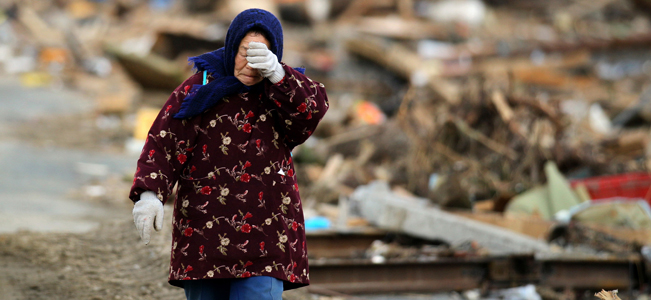CASPER
New member

FUKUSHIMA, Japan – Emergency workers racing to cool dangerously overheated uranium fuel scrambled Saturday to connect Japan's crippled reactors to a new power line, with electricians fighting tsunami-shattered equipment to restart the complex's cooling systems.
Though the power line reached the complex Friday, making the final link without setting off a spark and potentially an explosion means methodically working through badly damaged and deeply complex electrical systems at the Fukushima Dai-ichi plant on Japan's northeast coast.
"Most of the motors and switchboards were submerged by the tsunami and they cannot be used," said Hidehiko Nishiyama of Japan's Nuclear and Industrial Safety Agency.
Operators of the plant, which have prompted global worries of radiation leaks, hope to have power reconnected to four of the complex's six units on Saturday, and another on Sunday. However, even once the power is reconnected, it is not clear if the cooling systems will still work.
The storage pools need a constant source of cooling water. Even when removed from reactors, uranium rods are still extremely hot and must be cooled for months, possibly longer, to prevent them from heating up again and emitting radioactivity.
Along the northeast coastline, meanwhile, where the tsunami killed thousands of people and obliterated entire villages, rescuers pulled a man alive from a wrecked house eight days after a massive 9.0-magnitude earthquake began the cascade of catastrophes.
He was too weak to talk and transferred immediately to a hospital, a military official said, declining to be named because he was not authorized to speak with reporters. Japanese media reports said, however, that the man returned to the house a week after the disaster and was trapped only for one day.
As Japan crossed the one-week mark since the twin natural disasters spawned the nuclear crisis, the Japanese government conceded Friday it was slow to respond and welcomed ever-growing help from the United States in hopes of preventing a complete meltdown at the Fukushima Dai-ichi power plant.
The natural disasters claimed more than 7,200 lives, with many thousands more missing.
Emergency crews at the nuclear plant faced two continuing challenges: cooling the nuclear fuel in reactors where energy is generated and cooling the adjacent pools where thousands of used nuclear fuel rods are stored in water.
